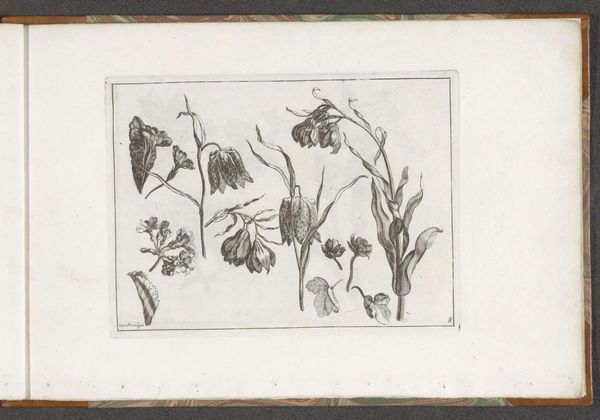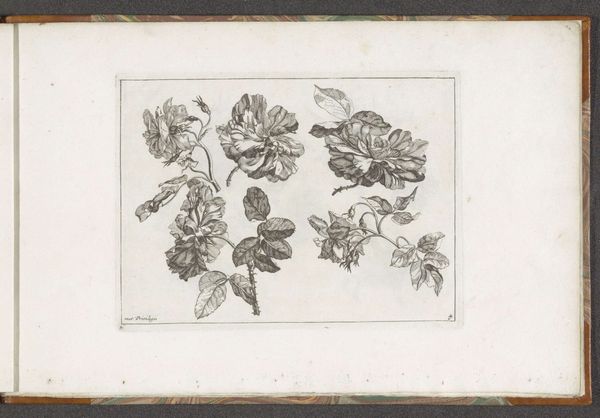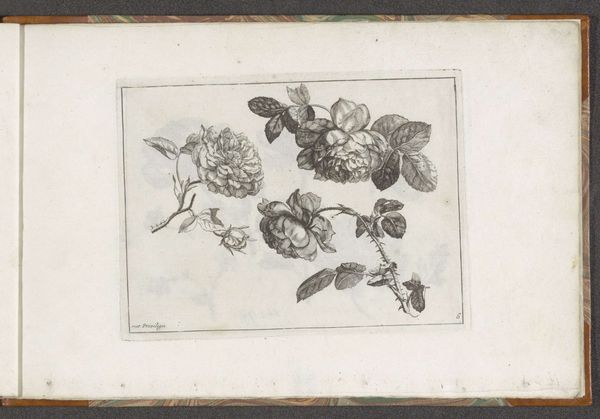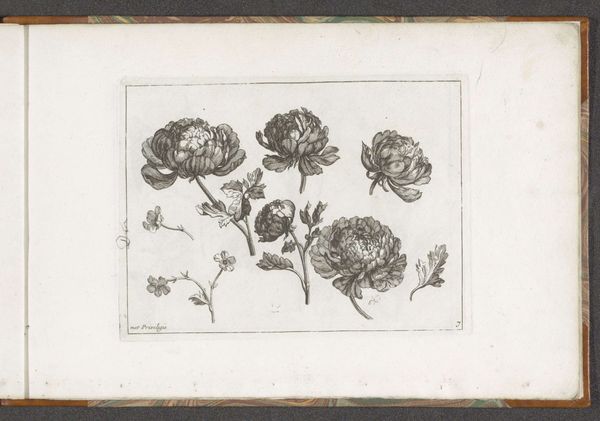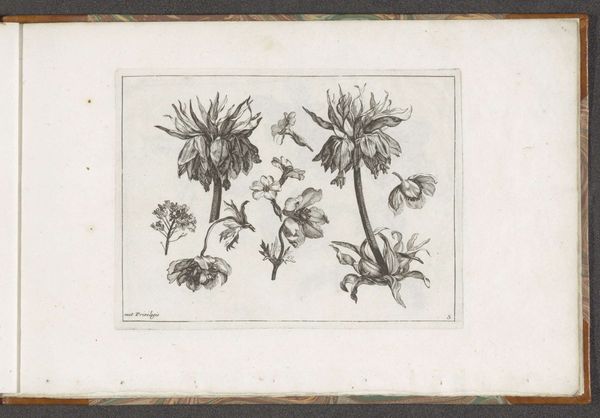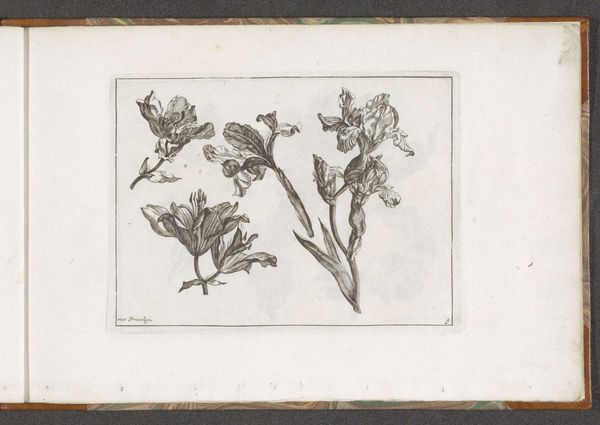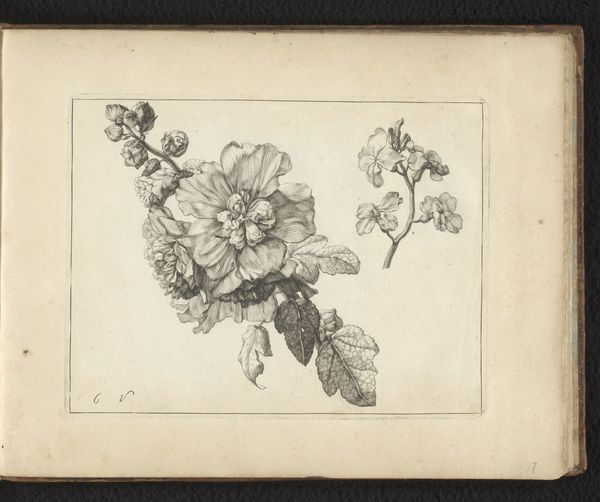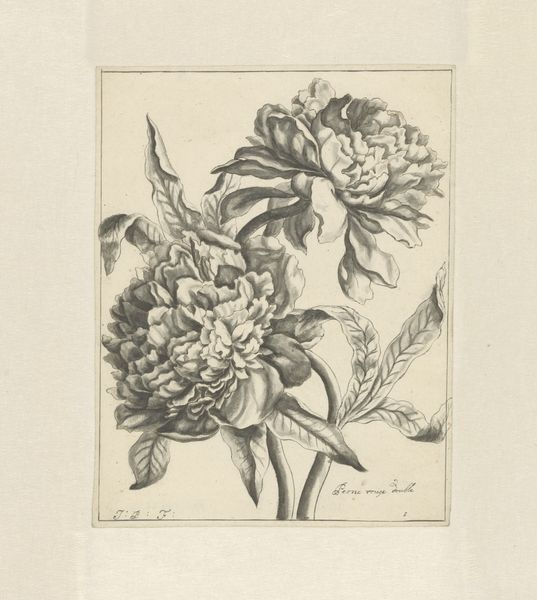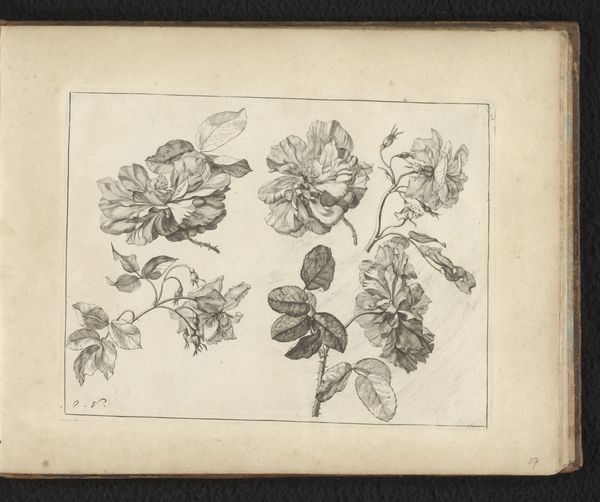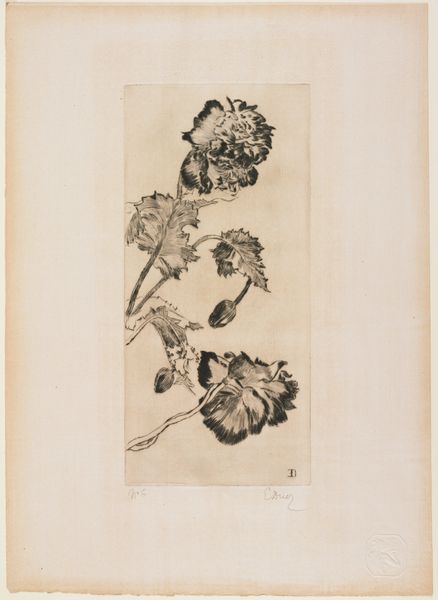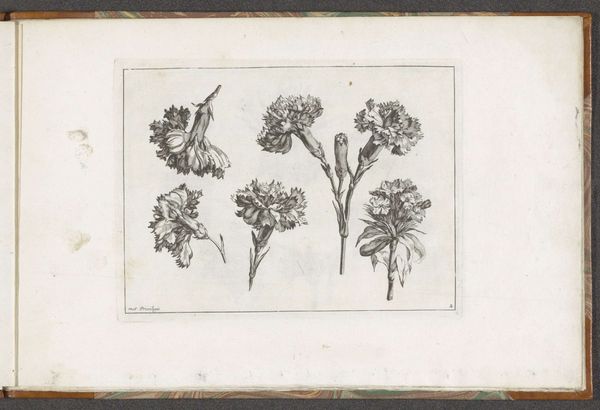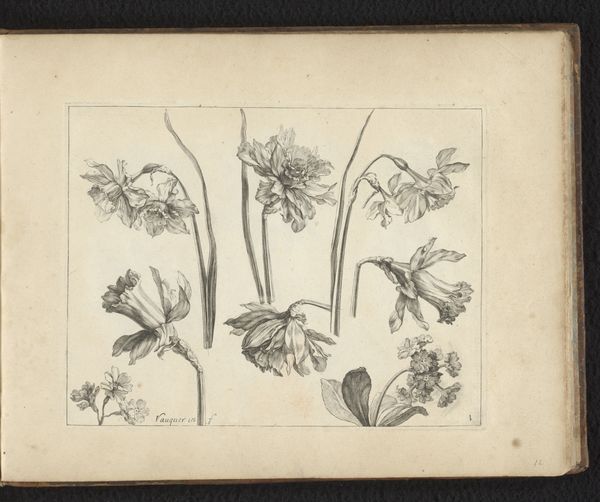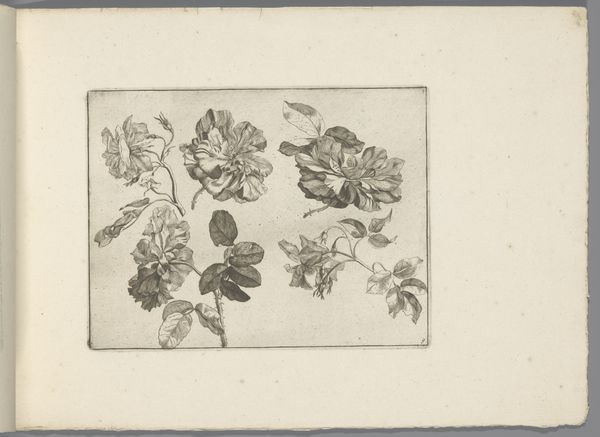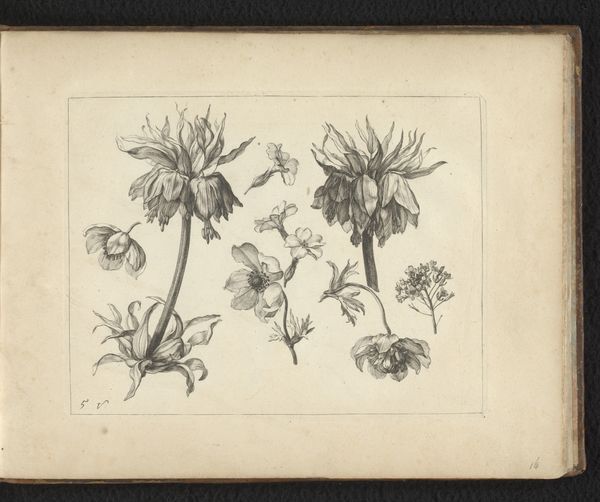
drawing, print, paper, ink, engraving
#
drawing
#
baroque
# print
#
paper
#
ink
#
coloured pencil
#
engraving
Dimensions: height 143 mm, width 190 mm
Copyright: Rijks Museum: Open Domain
Curator: This exquisite engraving, "Zonnebloem en narcis," or "Sunflower and Narcissus," dating back to the period of 1630 to 1718, presents a stark beauty against the aged paper. I believe it's attributed to an anonymous artist. What do you think of its initial impact? Editor: There’s something deeply melancholic about it. The stark contrast and wilting forms suggest a meditation on time and mortality. I can almost feel the impermanence radiating from those delicately etched lines. Curator: It’s interesting you say that, because I immediately felt a kind of stoic resilience in that massive sunflower. Perhaps it’s a stubborn refusal to succumb entirely. And the positioning with the narcissus, a symbol of vanity and self-absorption... maybe it's an intentional juxtaposition? Editor: Absolutely, and given the tumultuous socio-political context of the time, one can read this contrast through the lens of societal decadence versus the plight of the marginalized. Is the artist perhaps hinting at the self-serving nature of power structures as they neglect the common good? Curator: That’s a perspective I hadn't considered! To me, the botanical study seems to highlight a personal engagement with the natural world, an exploration of forms more than an explicit political statement. The fine detail of the engraving – the texture on the sunflower’s face, the delicate droop of the narcissus... they draw me into the silent, fleeting beauty. It speaks to a longing, a personal reflection on the world outside. Editor: But that’s precisely where we must be cautious – not to divorce personal longings from the wider sphere. Considering that artistic patronage was intimately tied to power, doesn't the decision to portray these specific blooms, rendered through meticulous engraving techniques, reflect a desire to meet certain aesthetic demands of the patrons, implicitly supporting the status quo? Curator: Perhaps. Or perhaps it shows us the universality of decay, experienced at all levels of society? The anonymous nature of its creator, the fragile medium – it all seems to invite a certain kind of reflection, independent of politics. Ultimately, it feels deeply human. Editor: A somber beauty then, intertwined with social and artistic forces always shaping, and being shaped, by nature's poignant fragility.
Comments
No comments
Be the first to comment and join the conversation on the ultimate creative platform.
